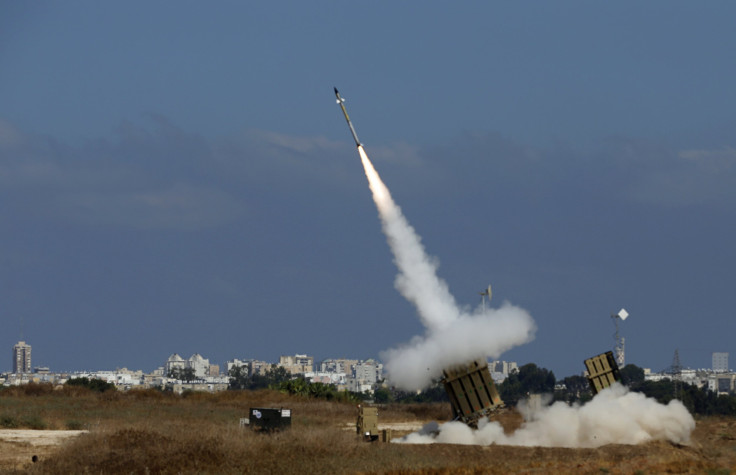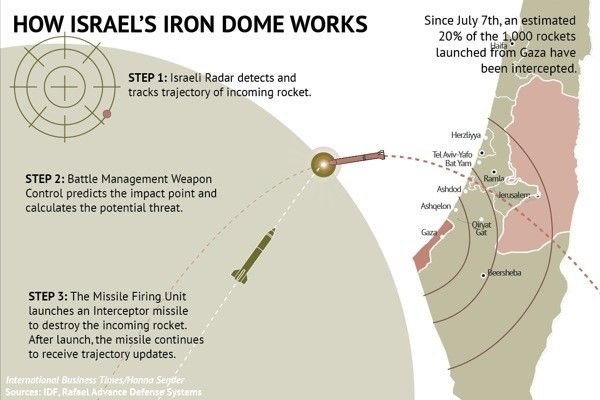Iron Dome Criticized By MIT Missile Expert

Though Israeli officials have been touting their Iron Dome anti-missile system as an effective defense against Hamas rockets fired from Gaza, a Massachusetts Institute of Technology expert discounts those claims, saying the disparity between Israeli and Palestinian casualties in the 2-week-old conflict has more to do with shelters and early warning systems than it does with anti-missile technology.
More than 600 Palestinians, both civilians and Hamas fighters, have died as a result of Israeli missile strikes inside the narrow Gaza zone from which there is essentially no escape -- the 369 square-kilometer (139 square-mile) strip is hemmed in by walls and the Mediterranean Sea, which is monitored by Israeli boats. Israel has said it has lost 28 soldiers and two civilians in the fighting despite the more than 2,000 rockets that have been fired at the Jewish state.
Physicist Theodore Postol, a professor of science technology and national security policy at MIT, said in an analysis Iron Dome has a success rate of less than 5 percent, and the primary reasons for fewer casualties in Israel are the abundance of shelters nearby and the early warning system.

Postol cites as evidence photos and videos from the November 2012 conflict and says the 2014 data collected so far “indicate the performance of Iron Dome has not markedly improved.”
The Israeli Institute of National Security Studies published a detailed reply to a previous Postol claim about the relative ineffectiveness of the Iron Dome in 2013, labeling it "dubious research without access to credible data." The New York Times reported July 9 Israel "has said that the [Iron Dome] system has a success rate of nearly 90 percent in intercepting the missiles it is meant to thwart."
Richard Lloyd, a former weapons expert and engineer at Raytheon, who published a critique of missile defense systems and has been quoted extensively as an expert on the issue, backs Postol’s assertions.
“They’re smart people," he said, "but the [Iron Dome] problems go on and on.”
The debate matters because the Iron Dome provides military planners a useful example of missile defense systems in actual use. Postol also says if the Iron Dome was as effective as Israel claims, the data would be available to prove it.
“The Israeli government publishes insurance claim data that occur during different time periods,” Postol wrote in an online post on the Bulletin.org. “This data would very clearly show a reduction in ground damage in the areas defended by Iron Dome.”
Postol said the only way to destroy the Hamas rockets fired into Israel is to hit them head on, which would destroy the warhead in-flight. Instead, he says, most Iron Dome rockets chase the Hamas rockets from behind or hit them from the side.
“In both such cases,” he writes, “geometry and the speed of the interceptors and rockets make it extremely unlikely the interceptor will destroy the rocket's warhead.”
As a result, the missile’s warhead typically falls to the ground, where it explodes. The defense system therefore makes Hamas rockets less exact in their targeting but does not make them less potentially lethal.
There is no missile defense system in Gaza, and Israeli missiles can penetrate the shelters that exist.
© Copyright IBTimes 2024. All rights reserved.





















